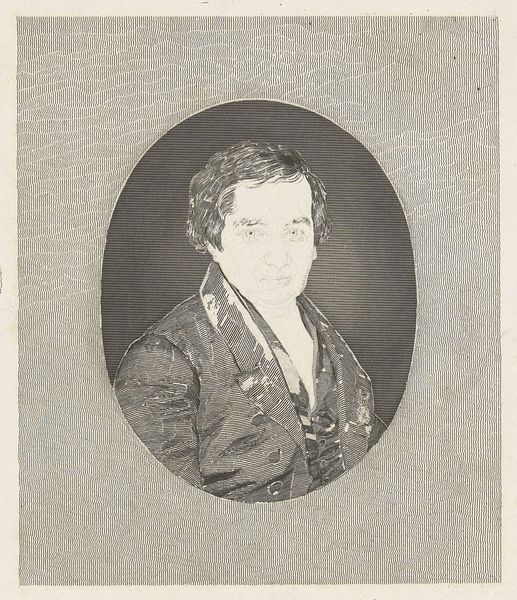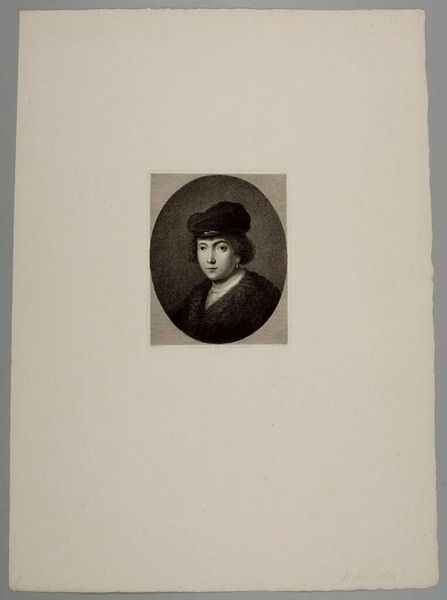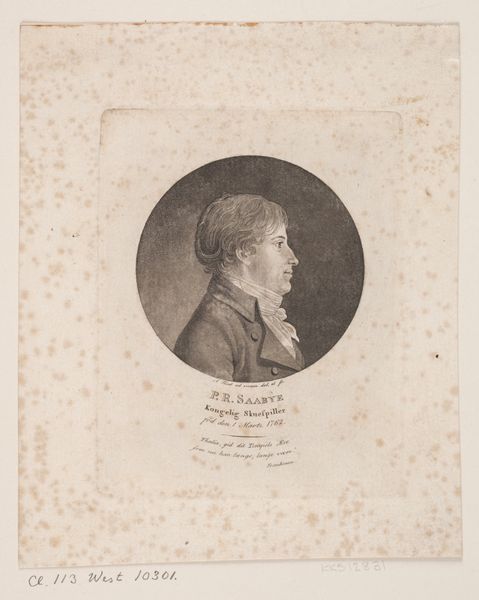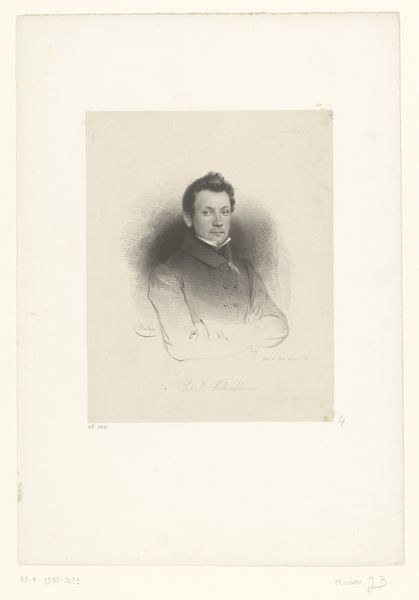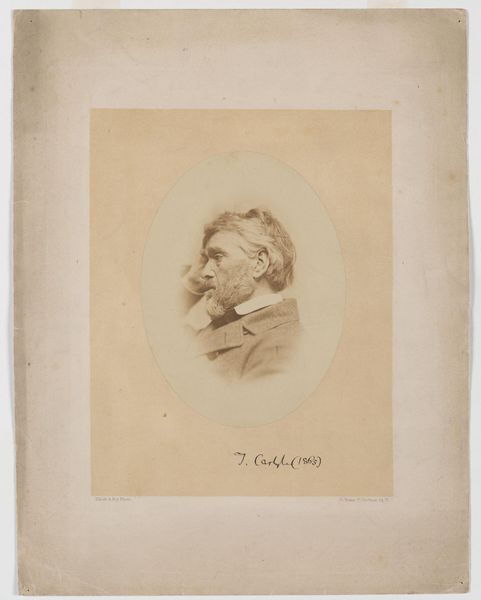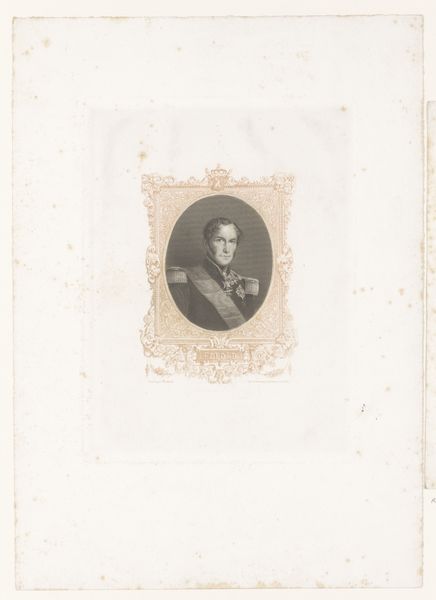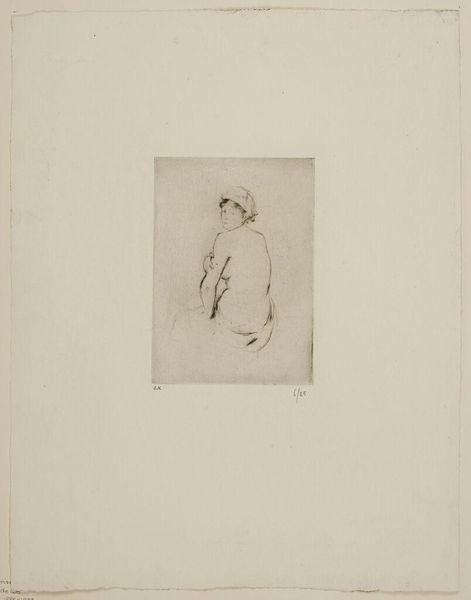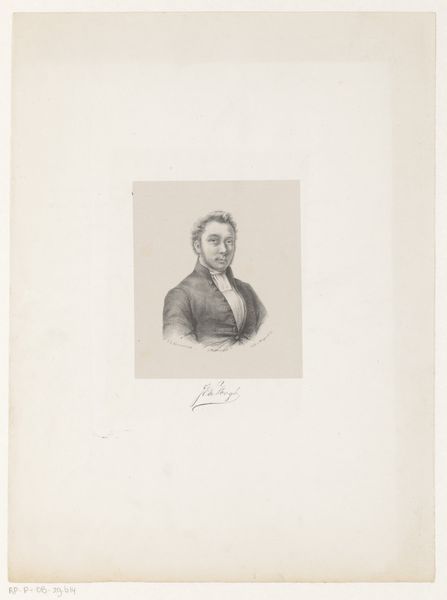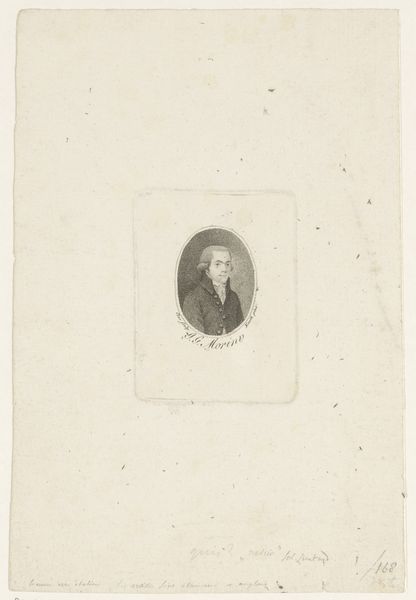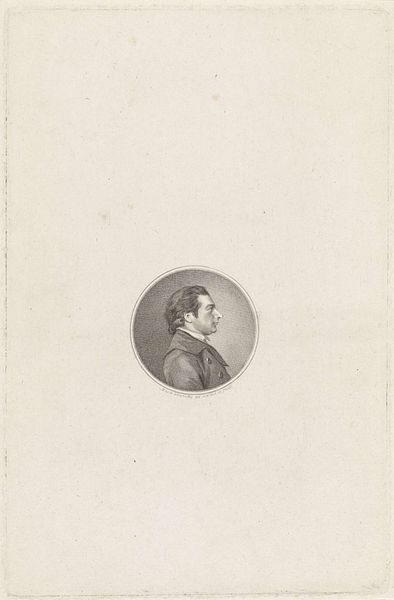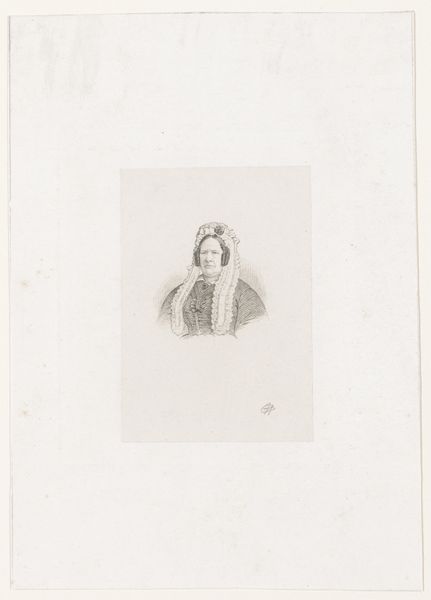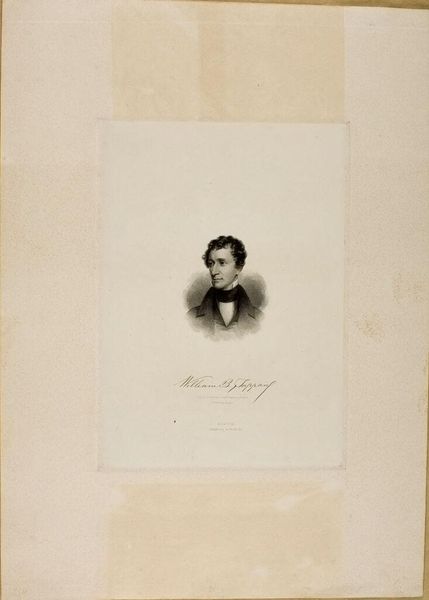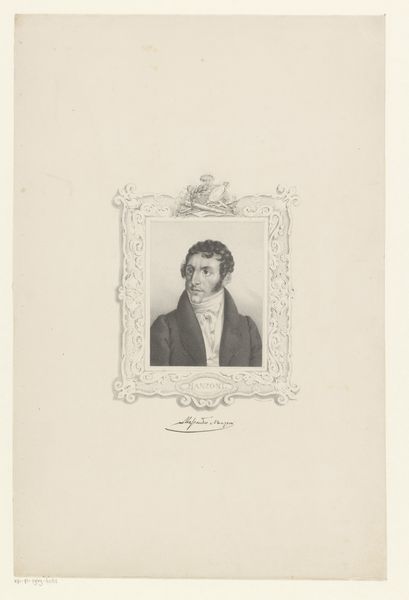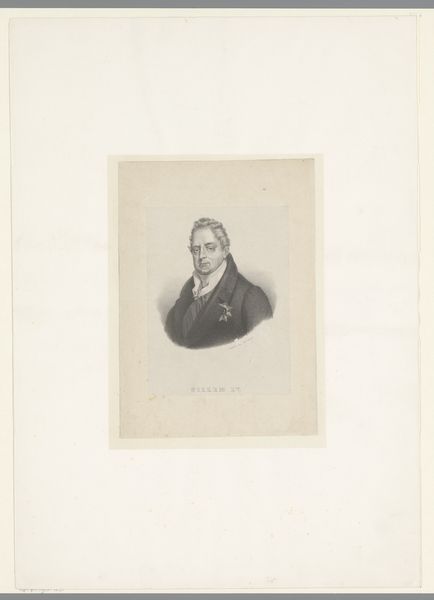
drawing, lithograph, print, paper
#
portrait
#
drawing
#
16_19th-century
#
neoclassicism
#
lithograph
# print
#
paper
Dimensions: height 300 mm, width 220 mm
Copyright: Rijks Museum: Open Domain
Henricus Wilhelmus Couwenberg made this portrait of Willem de Clercq, using a lithographic process. Essentially, it’s drawing with grease on stone, and printing it in reverse. The success of lithography was due to its relative ease of use, which lent itself to wider social use. Before this, printmaking involved carving into hard materials, like wood or metal. Lithography, in contrast, democratized the medium, making it easier to reproduce images quickly and cheaply. The resulting portrait here is a study in contrasts: light and dark, soft and precise. The lithographic crayon captures the texture of de Clercq's hair and clothing, while also rendering his likeness with clarity. The tonal subtleties create depth and volume, giving the portrait a sense of realism. The portrait is made with clean lines and careful attention to detail. The rise of lithography was both a symptom and a cause of increasing industrialization. Consider, next time you see a printed image, the social relations that made it possible.
Comments
No comments
Be the first to comment and join the conversation on the ultimate creative platform.
